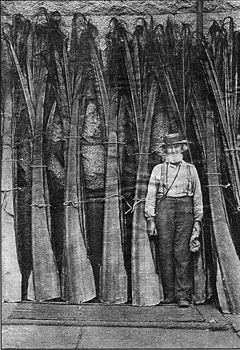In Search of Baleen, continued
After the Civil War (1861-1865), baleen, also called whalebone, was in great demand. Until plastic was perfected and rubber became more widely available, many Yankee whalers cruised the Arctic in order to keep the supply of baleen available for manufacturers in the United States. Much to the relief of whalers, the bowhead did not put up as much of a fight as the sperm whale did and the harvest was often bountiful.
Sunlight Day and Night
During the summer months, the North Pole is tilted towards the sun, so there is sunlight almost all day and all night in the Artic Region. Because the sun stays up longer, the Arctic air can warm up to 45 degrees F in some area, even higher in others. This climate change made the trip north inviting and provided more daylight hours in which to work during June, July and August.
Although whalers primarily spent their time at sea, they did have contact with native people like the Inupiaq Eskimo. Several different cultures inhabit the area, mainly Inupiaq and Yup'ik Eskimo on the coast of Alaska and Siberia, and Athapascan Indians in the interior of Alaska and Chukchi of Siberia. All have adapted to the difficult living conditions of the north.

New Bedford Whaling Museum